In order to start dehydrating, all you really need is a dehydrator. However, in order to adequately follow Raw Dehydrating 101 you should have all five of these pieces of equipment.
- Dehydrator
- Parchment paper
- Food processor
- Blender (optional)
- Large spoon (or icing spreader)
If you already own these five pieces of equipment then skip to the bottom of this page to complete the module. Otherwise, read on!
1. Dehydrator
There are three levels of dehydrator ownership:
A. Using your oven (unacceptable):
There is a myth in the raw food world that setting your oven’s temperature as low as possible and cracking the door open works as a dehydrator.
This does not work! If you do not have a dehydrator yet, it’s best to simply wait until you can afford to buy a dehydrator rather than attempt to dehydrate in your oven. The results will be very disappointing.
"Stock your raw kitchen with these 5 pieces of raw equipment and you'll be all set to make raw crackers, breads, veggie burgers, vegan meatballs, and much more!"
B. Round dehydrators (please try to avoid, they don’t work well):
Round dehydrators do not work very well. The air does not circulate properly–especially when set to low-temperatures (if your round dehydrator even allows you to tweak the temperature at all). In addition, they are stackable which is very annoying and means that you can’t access the food easily to check on it. They also have difficulty drying thicker items (ex. raw veggie burgers) all the way through because of bad air circulation.
However, if you do have access to a round dehydrator it is better than nothing and you might be able to experiment and get the hang of dehydrating with it, but it will be annoying.
Do not *buy* a round dehydrator, though. If you are going to buy a dehydrator, you are better off buying a cheap knock-off brand of square dehydrators (like the VegiKiln or the Good4U or other similar units that have a square shape and drawers that slide out). Do not invest in a round dehydrator.
C. Square dehydrators (I approve!):
Square dehydrators are best. They usually have trays that are easy to access, and they allow the warm air to circulate much more freely. In addition, the larger trays more easily fit wide sheets of crackers and fruit leather, etc.
Usually, square dehydrators come in 5-tray or 9-tray units. I recommend the 9-tray because then you can make larger batches. Trust me. You will be glad you get a larger unit. Because dehydrating takes so long and the results can be kept for quite a while, it’s much easier to make large batches less often.
There is a wide selection of square dehydrators out there, although it is difficult to find them in local stores. It’s best to buy dehydrators online. Prices range widely.
Some examples:
$100-range:
Brands: VegiKiln, for example.
Description: These are basically knock-offs of the Excalibur dehydrator. They used to be criticized for not having shut-off timers and not having an outer door. However, more recent models have attempted to fix these criticisms by adding these features (on some models). In my opinion, these cheaper models are perfectly fine.
However, you should consider whether you want a shut-off timer (definitely handy, but not necessary) and whether the model you are purchasing has an exterior door (can be useful because you can close the dehydrator and keep the heat inside even if not all your trays are in the dehydrator. Again, this is useful but not necessary).
If you are on a limited budget and are really scrimping and saving, I am sure you will do fine with a cheaper model like the VegiKiln.
$200+-range:
Brands: Excalibur, for example.
Description: The Excalibur is the gold-standard in dehydrators. All the big raw food gurus use Excalibur dehydrators. Excaliburs are known as the best of the best, hands down.
If you want to outfit yourself with perfect raw food gear like the pros then get yourself an Excalibur! Again, 9-tray is the best choice.
2. Parchment Paper or Teflex Sheets
You definitely need a thin sheet to protect your dehydrator trays.
"Which do I recommend, parchment paper or Teflex sheets? Although it’s not good for the environment, I prefer the disposable parchment paper. It’s much easier to work with and requires less clean up!"
They are thin sheets that you slip underneath your food (the layer between the food and the dehydrator tray) to catch drips, to prevent sticking, and to make sure that wet batter doesn’t flow throw the dehydrator trays. These thin, removable sheets should be taken out halfway through the dehydrating time (once the food is basically dry) so that the air can circulate properly within the dehydrator.
Also, these sheets are important in terms of protecting your actual dehydrator trays, which can be very annoying to clean.
The choice is:
A. Disposable sheets: (Parchment paper)
Parchment paper (also called “baking paper”) can be purchased in rolls, similar to saran wrap or aluminum foil. It is quite inexpensive and very convenient. Plus, when you’re done with the parchment paper you can simply throw the sheet away. (No clean up required.)
Parchment paper is food-grade paper, and food will not stick to it. (Do not use wax paper. Food will stick to it.)
B. Reusable sheets: (Teflex sheets, now called ParaFlexx sheets)
For years I’ve been calling them Teflex sheets, but apparently they are now called ParaFlexx sheets. Whatever their name, they are reusable plastic-like floppy sheets that you can line your dehydrator trays with to protect them. People normally purchase these sheets when buying a dehydrator and they get them shipped with their dehydrator.
You have to wash the Teflex/Paraflexx sheets in between uses.
3. Food Processor
A food processor is a big plastic bowl with a powerful S-blade in the bottom of it.
As you can tell from my dehydrator recipe book, a food processor is super important and, well, necessary for dehydrating anything exciting!
If you know me at all or have read any of my yammerings-on about raw food this won’t be a surprise to hear: do not spend a lot of money on your food processor.
When it comes to raw food equipment, I generally suggest this mantra:
• Buy a cheap food processor (less than $75) • Buy a knock-off square dehydrator (less than $125) (but not a round one) • Spend LOTS OF MONEY on your blender (Vitamix) ($400+)
4. Blender:
Your blender is the most crucial part of being a raw vegan, although not as crucial when it comes to dehydrating.
Blenders are used to make smoothies, puddings, sauces, and much more. I recommend the VitaMix. It’s the best blender you can get, it’s large, but it isn’t cheap!
There is no alternative to a good blender. If you must, you can use a cheaper, personal blender but I guarantee that your existing blender will not blend as well and the motor will burn out over time.
Don’t feel bad if you can’t afford one right away. But plan on buying a VitaMix at some point soon. At least put it on your Christmas list!
FAQ - Food processor versus blender:
"Do you know the difference between a blender and a food processor?"
A common question is, “What is the difference between a blender and a food processor and do I really need both?”
There is a HUGE difference, and yes you really do need both.
A food processor (wide plastic bowl with a big S-shaped blade on the bottom) is for combining DRY GOODS that stick together, like nut pates, cracker batter, refrigerator crusts and that type of thing.
A blender is for making REALLY WET STUFF, like smoothies and sauces and puddings… you know, dripping ooeh gooey wet stuff.
Yes, there is a difference! And yes you need both as a raw foodist! Why? Because it is hellishly impossible to make dry mixtures in a blender, and it is a disaster when making really wet and sloppy mixtures in a food processor, capiche?
But the good news is that you don’t need to spend top dollar on both. Get a cheap food processor because there is very little difference between cheap and expensive food processors.
Get a super expensive blender because there is a HUGE difference between a crappy blender and a good blender.
OK, this is a dehydrator course and not a raw food course so I should calm myself down a bit, but this is very important if you are trying to become a high raw foodist. There is no better investment than a high-speed blender (VitaMix or Blendtec) because you can get silky smooth results, even when blending hard things like nuts, frozen fruit, etc.
5. Icing Spreader (or a large spoon):
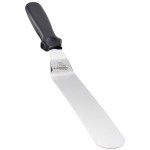 I normally don’t get into the nitty-gritty of telling you that you need measuring cups and all that basic kitchen stuff, because I figure that you already own all that stuff. Besides, that’s just common sense!
I normally don’t get into the nitty-gritty of telling you that you need measuring cups and all that basic kitchen stuff, because I figure that you already own all that stuff. Besides, that’s just common sense!
But I did want to share this handy tip with you.
When you are spreading batter (example, for crackers or for fruit leather etc.) onto your parchment paper or Teflex sheets, these icing spreaders are really handy.
I do not have a lot of kitchen gadgets, but I really find this to be useful and they are pretty inexpensive. They can be picked up for less than $10 at a kitchen supply store or even at the kitchen aisle of most big box stores, like Wal-Mart, Target, etc. An icing spreader is not a must have and you certainly don’t need it right away or at all.
You can easily use the back of a big spoon instead!
Assignment:
- I own a dehydrator.
- I have parchment paper.
- I own a food processor.
- I own a blender (optional).
- I have a large spoon (or icing spreader).
Once you have completed the assignments in this module, please proceed to the next module right away by clicking "complete."
FREE Raw Recipe Package
Subscribe to newsletter below. Get the 11 Best Raw Recipes (PDF E-Book Package) instantly.
The Rawtarian Recipes
Latest Certifications
-

kami_kev_5
Low-Fat Raw CleanseAugust 22, 2019 -

theartluva
Low-Fat Raw CleanseMay 22, 2019 -

marial4366
Raw Baby Steps ProgramMay 12, 2019 -

Mona
7-Day Raw Summer ChallengeJuly 5, 2018









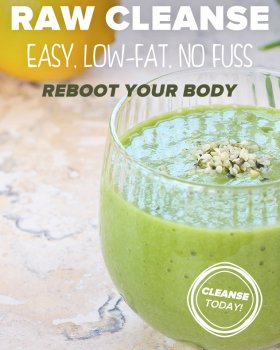












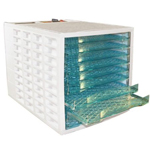
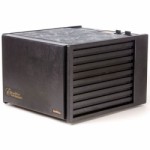
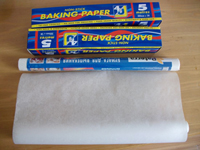
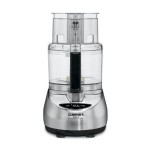
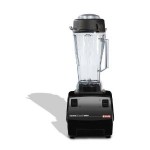





















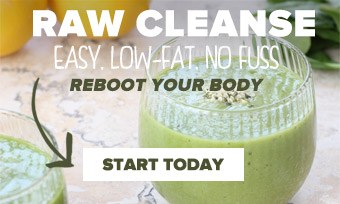
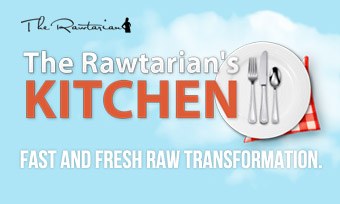
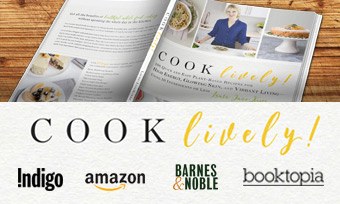


What's Being Talked About